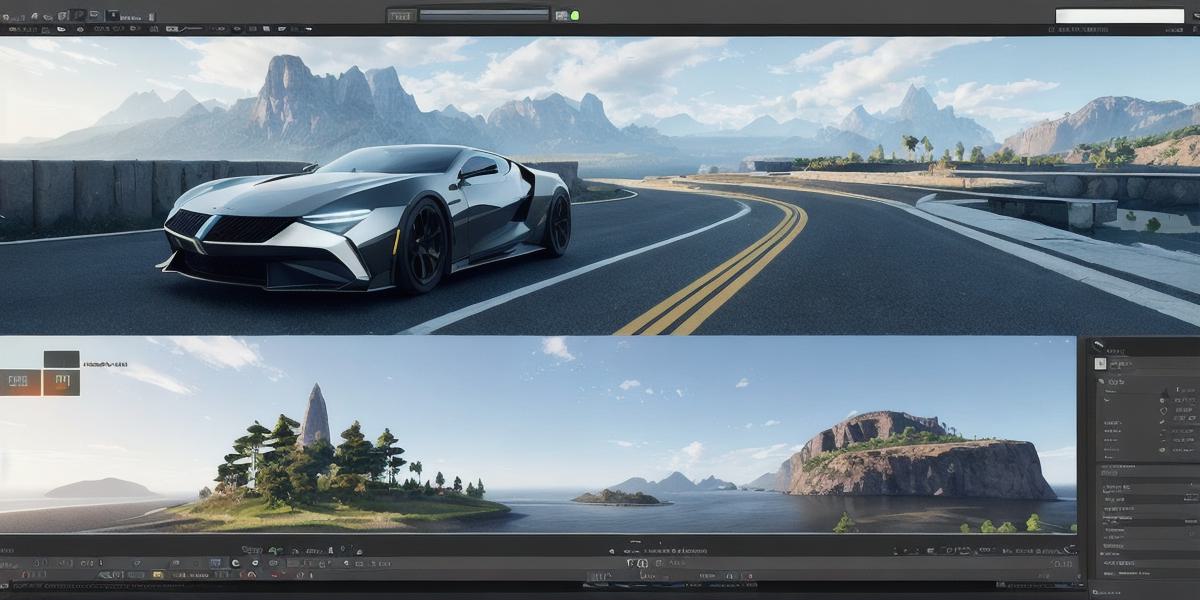Unreal Engine 5: What’s the Storage Size?

Are you a Unreal Engine developer looking to optimize your game or application for better performance and faster loading times? One of the key factors that can impact your project’s overall efficiency is storage size. In this article, we will explore the various aspects of storage size in Unreal Engine 5, including its impact on performance, how to manage it effectively, and best practices for reducing its size without sacrificing quality.
Storage Size vs. Performance
When it comes to game development, storage size is often overlooked in favor of other factors such as graphics and animation. However, optimizing your project’s storage size can have a significant impact on performance. This is because larger file sizes require more time to load and process, which can lead to longer load times and stuttering frames.
In addition to slowing down load times, large storage sizes can also be a burden on server capacity and increase the risk of data corruption or loss. Therefore, it’s important to strike a balance between storage size and performance to ensure that your game or application runs smoothly and delivers an optimal user experience.
Managing Storage Size in Unreal Engine 5
There are several ways to manage storage size in Unreal Engine 5. Here are some of the most effective techniques:
- Use compression tools: Unreal Engine provides a range of compression tools that can help reduce the size of your project’s files without sacrificing quality. These tools include texture compression, mesh optimization, and asset packaging.
- Reduce the number of assets: One of the most effective ways to manage storage size is to reduce the number of assets in your project. This means removing or reducing the size of unnecessary textures, models, and other files that are not essential to the gameplay experience.
- Use streaming techniques: Streaming involves loading only the necessary assets into memory as they are needed, rather than loading everything at once. This can significantly reduce storage requirements while also improving performance by minimizing load times.
- Optimize your code: Finally, optimizing your code can help improve performance and reduce storage requirements. Techniques such as reducing draw calls, minimizing the use of global variables, and avoiding unnecessary memory allocations can all help improve your project’s efficiency and reduce its overall size.
Best Practices for Reducing Storage Size in Unreal Engine 5
Here are some best practices for reducing storage size in Unreal Engine 5:
- Optimize your textures: Textures can be a major source of storage bloat in Unreal Engine projects. To reduce their size, consider using lower-resolution textures or compressing them using lossless or lossy compression techniques.
- Use LOD (Level of Detail) meshes: LOD meshes are optimized versions of your game’s models that are designed to be loaded only when needed. This can help reduce storage requirements and improve performance by minimizing the number of assets that need to be loaded into memory at any given time.
- Use asset bundles: Asset bundles allow you to package together related assets, such as textures and models, into a single file that can be loaded and processed more efficiently. This can help reduce storage requirements while also improving performance by minimizing the number of individual files that need to be loaded.
- Minimize data duplication: Data duplication occurs when the same asset is stored multiple times in your project. To avoid this, make sure that all assets are properly organized and linked together, and consider using tools such as asset merging or deduplication to eliminate unnecessary copies of the same file.
Conclusion
In conclusion, optimizing storage size is an important aspect of game development, particularly in Unreal Engine 5. By managing your project’s storage requirements effectively, you can improve performance, reduce load times, and deliver a better user experience. Whether you’re a seasoned developer or just starting out, by following the best practices outlined in this article, you can ensure that your Unreal Engine projects run smoothly and efficiently, no matter their size.








